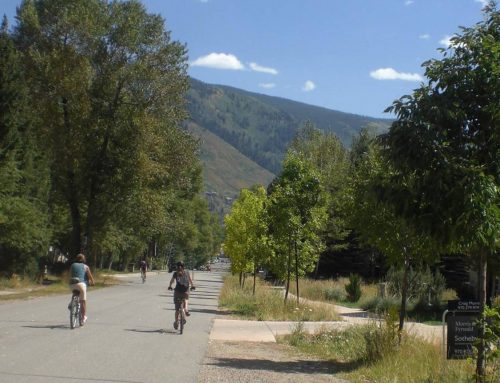
Aerial Vignette – Kety, TX (Salon des Refusés, Illustration by author)
In 2010, Crabtree Group Inc., joined an ad hoc design team backed by the environmental groups, Sea Grant Texas and the Texas Coastal Watershed Program, to create a counter-proposal for a competition that aimed to design a new subdivision. This new subdivision was to be located on a full section of land in rural south Texas.
This design contest was named the Low Impact Development Design Competition, it was sponsored by the Land / Water Sustainability Forum of Houston, Texas. Its purpose was to, “… develop a residential neighborhood with the look and feel of a master planned community in a market area where no other community of that type currently exists.” — that is, a Greenfield development project. But, unique to this competition was its requirement that all design proposals demonstrate a reduction in storm water run-off from the pre-development 5-year, 10-year, and 100-year storm event. A laudable goal, to be sure, especially in a part of the country racked with significant soil erosion during its frequent torrential downpours.
Joining the Crabtree Group, was a team of excellent designers, environmentalists, and a number of urban activists. And yet, we knew we had no chance of winning the competition. Our conviction was so sure, we named our team (and our proposal) the Salon de Refusés — for we definitely felt our design was outside the bounds of the “Académie”. From its inception, we intended to break with the terms of the competition and create a design that stood every chance at “failing.”
Why we intentionally set out to fail
The competition organizer provided a set of plans for the proposed site; including the full 640 acre section’s plat survey, an earlier proposed Conventional Suburban Development (CSD) scheme, and a set of target housing typology criteria for the proposals. Interestingly enough, the organizer referred to their CSD concept as a Traditional Design— despite it presenting nearly every aspect of conventional suburbia, replete with embarrassingly low target parcel densities (with an average residential parcel density of 3.8 homes per acre). To put this figure in perspective, the average household density required to support a descent transit service is 7 homes per acre. To provide a little background on what CSD looks like, here’s a brief summary of the development type put together by the design firm Dover Kohl & Partners.

Conventional Suburban Development (Google Earth image)
1. Dispersed form with no distinct edge, disturbing the majority of the site’s buildable land;
2. Single-use pods, containing one kind of lot and building type in each (e.g. office parks, residential subdivisions, and strip shopping centers);
3. One way in and out of each pod;
4. Garage doors and garbage pickup facing the street;
5. Large blocks with irregular shapes and cul-de-sacs;
6. Open space in the residual “left-over” land between pods and around regulated wetlands; and
7. Strip shopping centers with big box retail and large parking lots between buildings and the street.
One other aspect of the organizer’s site was its massive 142-acre dedication to the local school district, on which would be built a very large high school, equally large junior high, and an elementary school. Others have written before about the inherent problems associated with large-scale schools — and the type of urban pattern they induce. But, the Land / Water Sustainability Forum would not permit any competition entrants to propose any alternative use for that 142-acre site, let alone any alternative configuration for the schools.
What we chose to design was contrary to almost every intent of the organizer. 1) We proposed a fundamental change to the proposed schools, 2) We proposed a housing typology that would actually support transit service, and 3) We proposed a pattern of development that was an integrated whole unto itself (without the dependencies typically demonstrated by conventional suburbia, i.e., bedroom communities).
So rather than this:

Ventana Lakes “Traditional” Design (Land / Water Sustainability Forum of Houston – 2010)
We proposed this:

Salon des Refusés (Competition Entry – image by author)
We took the large school site and proposed, instead, to build upon it an entire village. This village would not only still have a high school, junior high, and elementary school — but it would accommodate 1,480 homes (300 more than the organizer’s mandate) at an average density of 11.8 homes per acre. These homes would be built over a wide typology of forms (single-family detached homes, townhouses, and apartments). It also would have churches, a village square, pedestrian oriented commercial operations, even a grange for the local farmers and community members. The remainder of the site would support nearly 500 acres of truck and hand farms that would grow a substantial amount of the food consumed within the village.
And, oh, the entire site’s stormwater discharge (the Gold Standard for the competition’s selection panel) was zero. That’s right, not a single drop of stormwater would leave the site. This was not simply a reduction in discharge, as requested in the competition requirements, it completely eliminated all discharge.
How was this possible? In addition to our greatly reduced footprint, all the streets in our design were to use pervious pavement which would allow a portion of the stormwater to infiltrate the ground — and all the street profiles included a landscaped shoulder swale that would simultaneously convey excess stormwater toward a recreated wetland (while cleaning the runoff via biofiltration) and permit further infiltration of the stormwater.
And yet, as we suspected, our proposal was resoundingly rejected by the Sustainability Forum’s selection panel.
So why do it?
Our goal had always been to start a conversation about appropriate urban forms, and place-specific design. We were able to touch upon a number of community design subjects even Sustainability experts tend to ignore — and do so within a forum in which these experts were to be gathered. In a way, this design competition became the perfect sounding board to critique a number of flaws that arise when organizations isolate their interests from each other.
Not only did we have the opportunity to highlight these subjects within the confines of this small competition, we took the conversation to the national level. After the competition, we took our proposal and submitted it to the Congress for the New Urbanism (CNU) for review as part of its annual Charter Awards recognition process. Fortunately for our purposes, the CNU granted our proposal a national Charter Award for our design.
We were able to take this award back to the Land / Water Sustainability Forum and its selection panel and re-engage in a substantive conversation about true sustainability.

Village Center view (Salon des Refusés – illustration by author)

Street scene for Single Family homes’ neighborhood (Salon des Refusés – illustration by author)

Street scene from Townhomes’ neighborhood (Salon des Refusés – illustration by author)
The following images were from the Salon de Refusés competition entry were subsequently published in the book, Landscape Urbanism and its Discontents: Dissimulating the Sustainable City.

Green Street perspective (illustration by author)

Green Street perspective (illustration by author)

Green Street perspective (illustration by author)
Only through continued effort, even in the face of detractors, will it be possible to change the world in a positive way.





